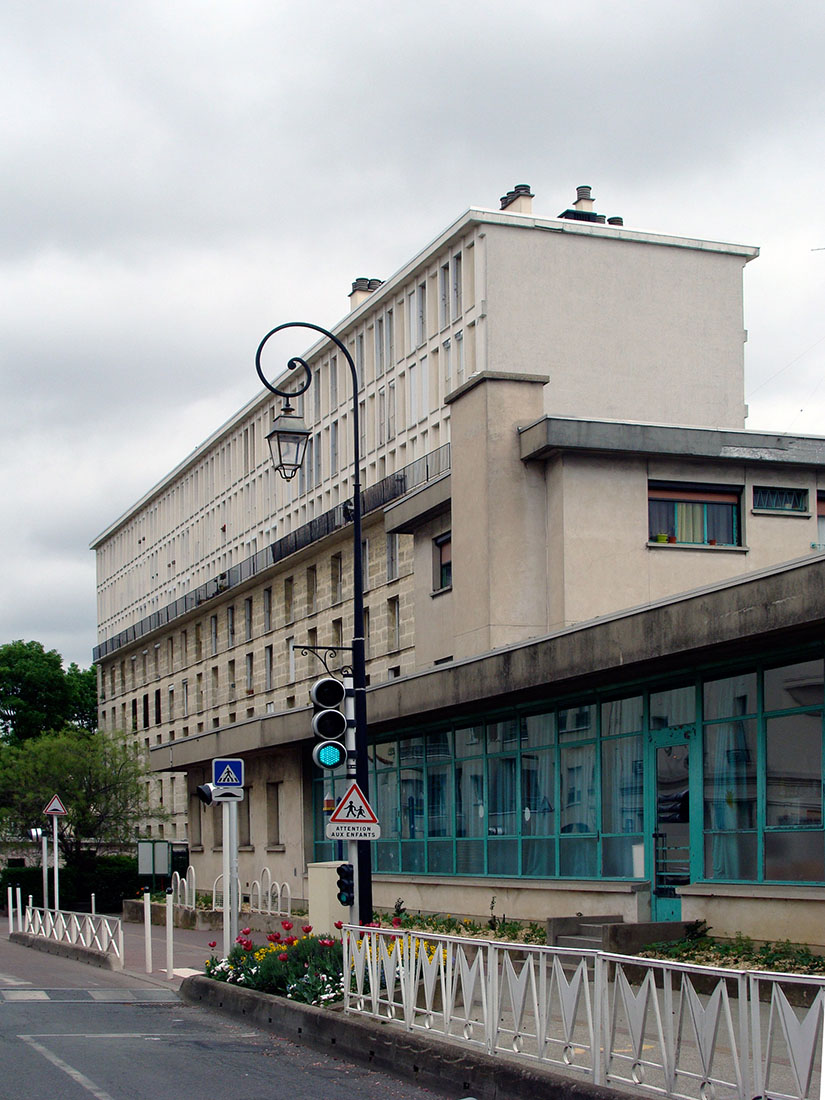 |
 |
 |
 |


Ensemble Montrouge
Rue Victor Bosch, Rue Carvès - Paris
1955 - 1958
The most surprising aspect of the „Résidence du stade Buffalo“ in the Paris city district of Montrouge, is the intimacy of the places.
It evokes peaceful and quiet sensations which are comparable to those of an incursion into an important property with its park, its high walls
and ist courtyards which are more or less planted. In Paris these sensations also can be evoked by the the Palais Royal, the Place Dauphine or
the Place des Vosges, at least when they are not all too crowded. One perceives the noise of the city but what we hear most is the silence,
the peace and the interiority oft he places – creating a world in itself. This quality results from Fernand Pouillon’s attitude to practice
the design oft the residences as a work of cratsmanship.
The 466 apartments are distributed around five very different spaces. This layout immediately reduces the perception of the actual density
and gives the impression of a much smaller visual density, which appears even pleasant. Two major features are important for these spaces:
their proportions in plan and their proportions in height. In regard oft the desired preception, which differs astonishingly from the reality,
Fernand Pouillon realized a sophisticated differentiation of heights.
The motif of horizontal lines which mark the transition from one floor to the other is a recurring feature in the work of Fernand Pouillon.
These bands creat flowing lines which enlarge the space. Here, this principle is developed to its peak. These lines and the articulation of the volumes
are obscuring the true heigt of the constructions. The real height of the buildings is well hidden, and the rapid and unconscious interpretation of the height
of buildings is prevented. The facades of the buildings on the exterior streets, which are the border of the residential development to its neighbourhood,
appear to be much lower than they are in reality, facilitating the integration into the built environment. For this reason, the tower in the heart of the residance
is a special feature. This isolated construction, standing on piles of concrete, with an exterior made of stone and glass, shows its height completely
and unvarnished. This remarkable and unique element is exposed to all views of the ensemble. This building is considered to be a reference to the bell tower.
This residential ensemble by Fernand Pouillon is one of his most complex designs, and probably also one of his most successfull.
Some elements, such as small walls of brick around the basin, joinery and railings have been transformed by the owners,
but all in all, the ensemble is still mostly intact and preserves the spirit of the original conception of the residence.